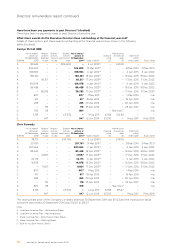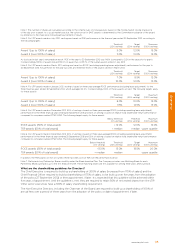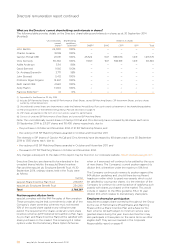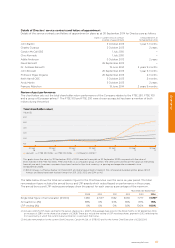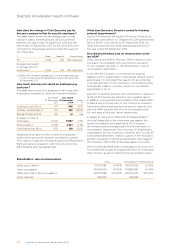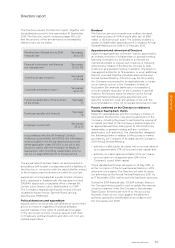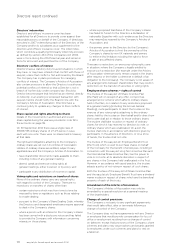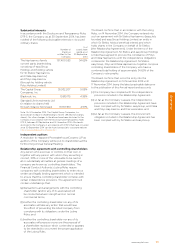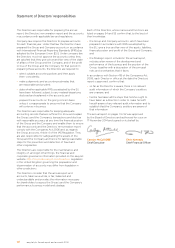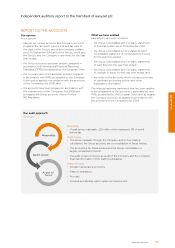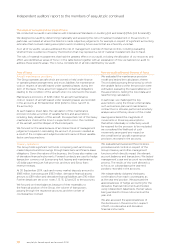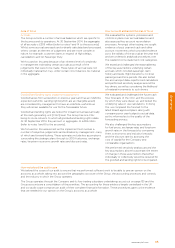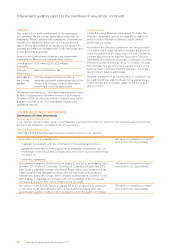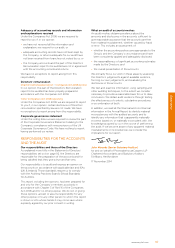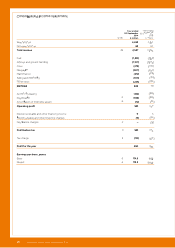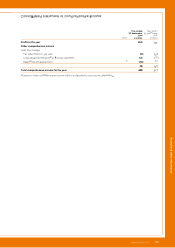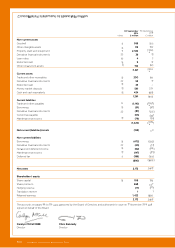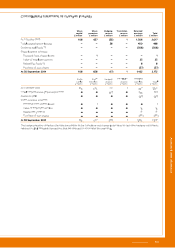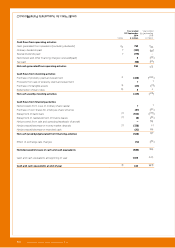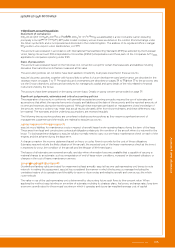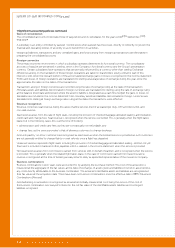EasyJet 2014 Annual Report Download - page 96
Download and view the complete annual report
Please find page 96 of the 2014 EasyJet annual report below. You can navigate through the pages in the report by either clicking on the pages listed below, or by using the keyword search tool below to find specific information within the annual report.
94 easyJet plc Annual report and accounts 2014
Independent auditors’ report to the members of easyJet plc continued
Area of focus How our audit addressed the area of focus
Aircraft maintenance provisions
The Group operates aircraft which are owned or held under finance
or operating lease arrangements and incurs liabilities for maintenance
costs in respect of aircraft leased under operating leases during the
term of the lease. These arise from legal and contractual obligations
relating to the condition of the aircraft when it is returned to the lessor.
Maintenance provisions of £226 million for aircraft maintenance
costs in respect of aircraft leased under operating leases are recorded
in the accounts at 30 September 2014 (refer to notes 1 and 17 to
the accounts).
At each balance sheet date, the calculation of the maintenance
provision includes a number of variable factors and assumptions
including: likely utilisation of the aircraft; the expected cost of the heavy
maintenance check at the time it is expected to occur; the condition
of the aircraft; and the lifespan of life-limited parts.
We focused on this area because of an inherent level of management
judgement required in calculating the amount of provision needed as
a result of the complex and subjective elements around these variable
factors and assumptions.
We evaluated the maintenance provision
model and tested the calculations therein.
This included assessing the process by which
the variable factors within the provision were
estimated, evaluating the reasonableness of
the assumptions, testing the input data and
reperforming calculations.
In particular, we challenged the key
assumptions using the Group’s internal data,
such as business plans and maintenance
contract terms. We also performed sensitivity
analysis around the key drivers of the model.
Having ascertained the magnitude of
movements in those key assumptions,
that either individually or collectively would
be required for the provision to be misstated,
we considered the likelihood of such
movements arising and any impact on
the overall level of aircraft maintenance
provisions recorded in the accounts.
Treasury operations
The Group holds significant net funds, comprising cash and money
market deposits and borrowings through bank loans and finance lease
obligations. Given the nature of the business, the Group also makes use
of derivative financial instruments. Forward contracts are used to hedge
transaction currency risk (comprising fuel, leasing and maintenance
US dollar payments), jet fuel price risk, and euro and Swiss franc
revenue receipts.
At 30 September 2014, cash and money market deposits amount to
£985 million, borrowings are £563 million, derivative financial assets
amount to £89 million and derivative financial liabilities are £110 million.
Further details are set out in notes 1, 13, 15, 22 and 23 to the accounts.
We focused on these balances because of their materiality to
the financial position of the Group, the volume of transactions
passing through the respective accounts and the number of
counterparties involved.
We evaluated and assessed the processes,
procedures and controls in respect of the
Group’s treasury and other management
functions which directly impact the relevant
account balances and transactions. We tested
management’s year end account reconciliation
process. The results of this work allowed us
to focus on substantiating the year-end
positions recorded in the accounts.
We independently obtained third-party
confirmations from each counterparty as
at the year end position. We assessed the
appropriateness of hedge accounting for the
derivative financial instruments and tested,
using independent data-feeds, the fair values
being ascribed to those instruments at the
year end.
We also assessed the appropriateness of
the disclosures in the accounts in respect
of both non-derivative and derivative
financial instruments.
The scope of our audit and our areas of focus
We conducted our audit in accordance with International Standards on Auditing (UK and Ireland) (“ISAs (UK & Ireland)”).
We designed our audit by determining materiality and assessing the risks of material misstatement in the accounts. In
particular, we looked at where the Directors made subjective judgements, for example in respect of significant accounting
estimates that involved making assumptions and considering future events that are inherently uncertain.
As in all of our audits, we also addressed the risk of management override of internal controls, including evaluating
whether there is evidence of bias by the Directors that may represent a risk of material misstatement due to fraud.
The risks of material misstatement that had the greatest effect on our audit, including the allocation of our resources and
effort, are identified as “areas of focus” in the table below together with an explanation of how we tailored our audit to
address these specific areas. This is not a complete list of all risks identified by our audit.


